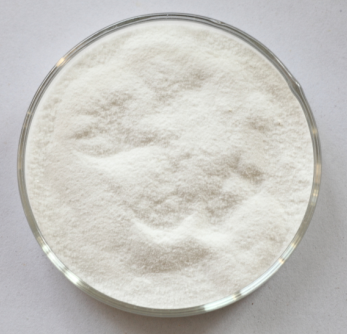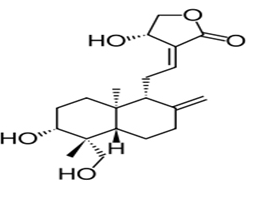Hot sale reasonable price Andrographis Extract Jakarta
Hot sale reasonable price Andrographis Extract Jakarta Detail:
[Latin Name] Andrographis paniculata(Burm.f.)Nees
[Plant Source] Whole herb
[Specification] Andrographolides 10%-98% HPLC
[Appearance] White powder
Plant Part Used: Herb
[Particle size] 80Mesh
[Loss on drying] ≤5.0%
[Heavy Metal] ≤10PPM
[Storage] Store in cool & dry area, keep away from the direct light and heat.
[Shelf life] 24 Months
[Package] Packed in paper-drums and two plastic-bags inside.
[Net weight] 25kgs/drum
[What is Andrographis?]
Andrographis paniculata is a bitter tasting annual plant, referred to as the “King of Bitters.” It has white-purple flowers and it is native to Asia and India where it has been valued for centuries for its numerous medicinal benefits. Over the past decade, andrographis has become popular in America where it is often used alone and in combination with other herbs for a variety of health purposes.
[How does it work?]
According to Memorial Sloan-Kettering Cancer Center, the active ingredient in andrographis is andrographolides. Due to the andrographolides, andrographis has potent anti-inflammatory and antimalarial properties. It also has antimicrobial properties, meaning it can help to fight off and prevent infections from harmful microorganisms such as viruses, bacteria and fungi. In addition, andrographis is a powerful antioxidant and it can help to prevent free radical induced damage to your cells and DNA
[Function]
Cold and Flu
Scientists have discovered that andrographis helps to boost the immune system by stimulating the body’s production of antibodies and macrophages, which are large white blood cells that scavenge harmful microorganisms. It is taken for both the prevention and treatment of the common cold, and it is often referred to as Indian echinacea. It might help lessen the severity of cold symptoms such as sleeplessness, fever, nasal drainage and sore throat.
Cancer, Viral Infections and Heart Health
Andrographis may also help to prevent and treat cancer, and preliminary studies done in test tubes found that extracts of andrographis help to treat stomach, skin, prostate and breast cancer. Due to the herb’s antiviral properties, andrographis is used to treat herpes and it is also currently being studied as a treatment for Aids and HIV as well. Andrographis also promotes heart health and can help to prevent the formation of blood clots as well as to dissolve already formed blood clots. In addition, the herb relaxes smooth muscles in the walls of blood vessels and thereby helps to reduce high blood pressure.
Additional Benefits
Andrographis is used to promote gallbladder and digestive health. It also helps to support and strengthen the liver and it is used in combination with other herbs in several Ayurvedic formulations to treat liver disorders. Finally, andrographis extracts taken orally have been found to help neutralize the poisonous effects of snake venom.
Dosage and Precautions
The therapeutic dose of andrographis is 400 mg, twice daily, for up to 10 days. Although andrographis is considered safe in humans, the NYU Langone Medical Center warns that animal studies suggest that it may impair fertility. Andrographis may cause unwanted side effects such as headaches, fatigue, allergic reactions, nausea, diarrhea, altered taste and pain in the lymph nodes. It may also interact with certain medications and as with any supplement you should consult your health care practitioner before taking the herb.
Product detail pictures:

Related Product Guide:
Our company insists all along the quality policy of "product good quality is base of enterprise survival; buyer fulfillment will be the staring point and ending of an company; persistent improvement is eternal pursuit of staff" and also the consistent purpose of "reputation very first, shopper first" for Hot sale reasonable price Andrographis Extract Jakarta , The product will supply to all over the world, such as: Jakarta, Islamabad, Ireland, By integrating manufacturing with foreign trade sectors, we can present total customer solutions by guaranteeing the delivery of right merchandise to the right place at the right time, which is supported by our abundant experiences, powerful production capability, consistent quality, diversified products and the control of the industry trend as well as our maturity before and after sales services. We'd like to share our ideas with you and welcome your comments and questions.
If you are looking for ways to increase sexual stamina and improve sexual performance, there is a program that can help you with the best male enhancement. Natural Male Solutions has programs for penis enlargement exercises and natural penis enlargement that will teach you how to improve sexual stamina. Male enhancement pills are also available, and you can learn ways to increase sexual stamina online at www.naturalmalesolutions.com
Find me on Facebook: https://www.facebook.com/LudaxxF21allnaturalsugarblocker
www.f21girl.com
What is F21?
F21 has been specifically formulated as an All Natural Sugar Blocker™ to help limit your blood sugar absorption. For every gram of F21 you can block up to 20 grams of sugar (sucrose). Additionally, our patent pending formula not only helps promote weight loss, it benefits the digestive system by allowing the blocked sucrose to support beneficial probiotic bacteria while the polysaccharide (PSK) boosts your immune system response.
F21 Ingredients:
L-Arabinose, Coriolus Versicolor Polysacchride, Konjac-Mannan, Magnesium Stearate
Mint flavor: Menthol and Natural Colors.
https://venaker.ludaxx.com
The goods we received and the sample sales staff display to us have the same quality, it is really a creditable manufacturer.









